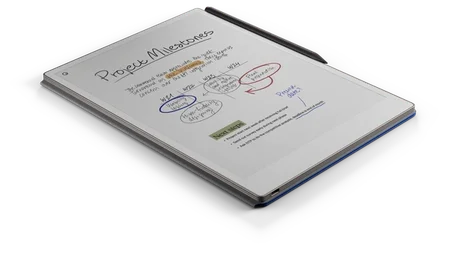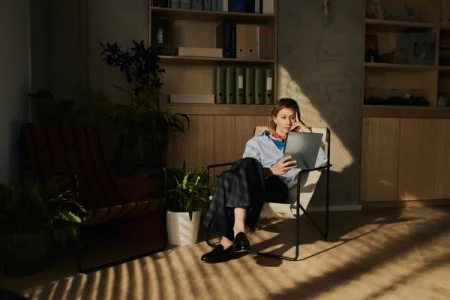What is a digital notebook?
Digital notebooks offer us the feel of paper and the speed of digital technology. Find out more about the tool that’s changing how we think, work, and create.
From scribbles to screens
Humans have a long and dedicated past when it comes to putting our thoughts down onto paper. For millennia we’ve tried capturing our ideas on whatever surface we could find.
A quick run through of history shows the Sumerians used clay tablets around 3400 BCE, inscribing words with reed pens before baking them to preserve the text. The Egyptians used papyrus, or wooden tablets coated in a white paint called gesso, while the Greeks and Romans adopted wax tablets. It’s these tools that finally gave our ideas permanence.
Then paper, invented around 206 BCE during the Han dynasty, revolutionized communication for centuries. But as the digital age emerged, paper turned to pixels, and keyboards replaced pens. The free-flowing feeling of writing on paper was being left behind. Although early electronic notebooks, like Jeff Hawkins’ GRiDPad in 1989, tried to bridge the gap, none could replicate the special sensation of writing on paper.
Paper meets progress
That’s how reMarkable began to reinvent the notebook in 2013. Led by our founder Magnus Wanberg, the team spent three years meticulously developing the first paper tablet, which was unveiled in 2017. The original reMarkable had a devoted following and set the stage for its 2020 successor, reMarkable 2. With its lightweight design and minimalist focus, it soon found itself in Time magazine’s “Best Inventions of 2020” list.
In 2013, Magnus Wanberg noticed his colleagues were still jotting things down on paper, despite having laptops and smartphones. “Why hasn’t anyone replaced paper with technology?” he wondered, a thought that led him to develop reMarkable.
- Mariah Espada, Time Magazine

Say goodbye to clutter
So, what exactly is a digital notebook? In short: it’s a device that mimics the feeling of writing on paper while using the powers of digital technology. In a world where every tablet is a portable distraction—buzzing with notifications and brimming with apps—digital notebooks are designed for deep work. Textured screens along with highly responsive pens give the illusion of ink on paper, so writing feels natural. Devices like these also use cloud storage and search tools to keep your thoughts organized and within reach. More importantly, they strip away the noise. No emails, no social media, no interruptions. Just you, your ideas, and the page.

Why use a digital notebook?
For anyone who loves the freedom of pen and paper—whether you’re a note-taker, doodler, or an enthusiastic planner—a digital notebook helps to reduce outside noise and get down to the essentials. Think of it as all the joy of handwriting with the added convenience of note taking technology too. With a digital notebook, everything lives in one searchable, endlessly expandable space, so no more piles of paper creating clutter either. You’ll also never run out of pages, no matter how big your ideas get. And our paper tablets are designed with environmental impact in mind, made with recycled materials, repairable design, and quality that lasts.
Learn more about reMarkable paper tablets today.


